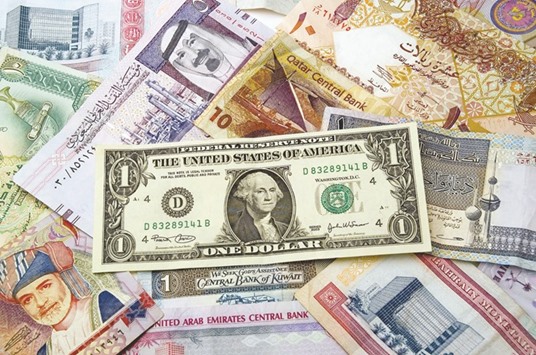The (expected) hardening of interest rates in the Gulf Cooperation Council (GCC), in view of the US Federal Reserve’s future policy stance after the 0.25% hike last week, is likely to add to the existing challenges for the region in lower growth and higher borrowing costs for the corporate and consumer segments, according to Kamco.
“Further rate hikes may add to the existing challenges for the GCC in terms of lower growth as higher borrowing costs are likely to make its way through to corporates and consumers via higher interbank rate,” Kamco said in a report.
Post 2017, the Fed does see the possibility of benchmark rates in the US reaching above 3%, to an upper end of the range of 3.4% by as early as 2018, whereas the longer-term rates post 2019 could inch up to 3.8% on the higher end, it said.
The average expectations of policymakers have been pushed up from 2017 onwards by 20-30 basis points compared to their September-16 meeting. The median expectation by the end of 2017 is at 1.4% compared to previous expectation of 1.1%.
Similarly, the average rate projection for 2018 is 2.1%, up from 1.9% in September-16.
Expecting interbank rates in the (GCC) region to rise in response to future hikes, Kamco said the three-month interbank rates exhibited mixed trends as Saudi Arabia, Kuwait and Qatar rates rose, while the rate in the UAE declined from 1.4029% to 1.3336%, as banks would have likely released funds on softer terms.
“Though some central banks have kept the lending rates unchanged in response to the rate hike in the US in order to keep the liquidity in their economies comfortable, future rate hikes would eventually reflect on in interbank rates and eventually lead to higher borrowing costs in the region,” the report said.
Following the recent announcement of a Fed rate hike, GCC central banks also raised their benchmark rates, given the pegs of their countries to the dollar.
Saudi Arabia raised its reverse repo rate to 0.75%, while keeping its repo rate at 2%. The Central Bank of Kuwait lifted its discount rate by 25bps from 2.25% to 2.5%, while the UAE raised rates on its certificates of deposits by 25 bps. Bahrain and Qatar also raised key interest rates by 25bps to 0.75%. The overnight interbank offered rates of UAE, Kuwait and Qatar rose as a result.
“Given the expectations of further future rate hikes, Kamco Research expects bonds to relatively underperform other asset key asset classes over the medium term, as yields fall, while the performance of equities would be more based on corporate earnings, rather than liquidity driven, as seen in the past,” it said.
The US dollar continued to scale multi-year highs leading up to the Fed event, and even post the rate hike, a trend that is expected to continue in 2017, as more risk-off trades unfold, it said, adding meanwhile, a strengthening dollar did dampen the rise in oil prices related to the expected reduction in output, but “we expect prices to sustain above the $50 per barrel level.”
Kamco now expects the GCC region to return to current account surplus in 2017 against the deficit of 0.5% of GDP (gross domestic product) forecasted by the International Monetary Fund, as balance of trade terms could improve if higher oil prices sustain and dollar strength persists, leading to lower import bills for the region.

Kamco expects the GCC to return to current account surplus in 2017 against the deficit of 0.5% of GDP forecast by the IMF

